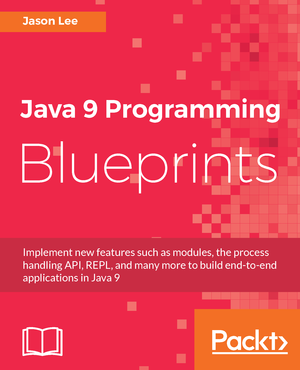From time to time, someone, trying to cut through all the hype and spin, will attempt some sort of statistical analysis to determine which web framework is "winning." The results are almost always disappointing, and not because I don’t agree with the outcome, but because the methodology is so flawed. The most recent attempt I’ve discovered, noble as it is, is no different.
Day two is over, as I sit here on the morning of the third, despite my best intentions. It was a long day for me, but a good one, overall.
I’m actually writing this on day 2, but I was up late working and didn’t get a chance last night, so, without further delay, here are my thoughts on JSFOne day #1.
JSFOne is just a week and a half away, so if you haven’t done so yet, buy those tickets! The Java Posse recently plugged the show in the Quick News section in what I think might be the greatest 34 seconds in Java Posse history. Listen for yourself. ;)
Over the past year or so, I’ve been slowly migrating — somewhat accidentally — to Maven. I had even begun migrating the build environment for Scales from Ant to Maven, but hit a huge roadblock: annotation processing. Scales depends heavily on compile-time annotation processing, and the only thing I could find on the web was other people with the same problem. As I was working on some of my JSFOne examples, I really wanted to use Maven, as the NetBeans support is a lot cleaner with Maven versus an externally maintained Ant build file, so I set to with renewed purpose. Finally, I seem to have found the right query string, as I appear to have solved my problem. The solution? Ant.
Jim Driscoll wrote a really helpful blog entry regarding the GlassFish Update Center module he wrote for Mojarra. After reading that, I decided to revisit Quercus on GlassFish. Using Jim’s incredibly detailed entry, as well as looking at the code in the Mojarra 2.0 SVN repo, I was able to get an Update Center module working that installs and configures Quercus for you, so now all you have to do to get WordPress running, for example, is install this module, and extract WordPress into your document. Easy!
For those interested, the Update Center url is http://uc.steeplesoft.com/quercus.xml. To set this up, you’ll need to start the Update Center ($GF_HOME/updatecenter/bin/updatetool.*), switch to the Preferences tab, click Add, and fill out the form. Once that’s done, switch to the "Available Software" tab, click the "Check for Updates" button in the upper right corner, and wait for the process to finish. You should now see Quercus available under the "Web Technologies" section.
For those interested, the source code is in my Mercurial repository here.
Due to some issues in GlassFish v2, automatic uninstallation is a bit complicated. The module supports it, but you have to get your hands dirty to make it work. Jim has details on his blog.
If you use this, please let me know how it works out for you. :)
I have just uploaded RC2 for Mojarra Scales 1.0, a JSF component set born of the Mojarra Sandbox. This release features a number of bug fixes and a handful of new enhancements. When updating, make sure you grab the latest JSFTemplating snapshot from either its download page or Maven, as there are some bug fixes and features there that Scales needs. You can download the last jar here.
With all the hype around JRuby, Jython, Scala, Groovy, etc., an oft-overlooked dynamic language with JVM support is PHP. Thanks to the hard work of the folks at Caucho Technology, the Quercus project offers a pure Java implementation of the PHP language, sporting support for a lot of the major PHP-based applications. In this entry, we’ll look at how to configure GlassFish to provide easy PHP support, and then look at installing WordPress, the popular blogging software (which runs this site) on GlassFish.
For those of you that like to hear me speak (and, yes, I’m looking at you, Mom!) I will be at JSFOne, a conference brought to you by the No Fluff Just Stuff team and dedicated to the JSF ecosystem.
The JSF 2.0 Expert Group (operating under the auspices of JSR 314) has released Early Draft Review 1 of the upcoming revision of the spec. We are soliciting feedback, of course, and the window of opportunity for that runs through July 2. If you want to have some input on the direction of the specification, now is the time to speak up. :)
The major changes in this draft release are baked in Ajax support, and what we’ve termed "EZComp," which is better described as composite components. Composite components, which touches on a change to finalized in a later release, namely, the inclusion of Facelets, allows a component developer to create a new component by piecing together several others in a template file. This functionality is very similar, as best as I can tell as I’ve never used them, to Facelets' component support, where a snippet of markup is specified in a file and can then be treated as an actual component. Unlike the Facelets version, though, these composite components are "real" components in that they are backed by a UIComponent. If you were at JavaOne, this is what Ed demoed in this presentation (with Roger demonstrating the Ajax support).
There’s still much work to be done before September when we are schedule to deliver the Proposed Final Draft, but this is a pretty good start. If you have any interest at all, please review the spec and give us feedback. We really do want your input, as our goal is to improve upon the JSF experience and solve as many of the real world pain points as we can. If your favorite pain point isn’t being addressed, you owe it to yourself to speak up! :)
 My name is Jason Lee. I am a software developer living in the middle of Oklahoma. I’ve been a professional developer since 1997,
using a variety of languages, including Java, Javascript, PHP, Python, Delphi, and even a bit of C#. I currently work for Red Hat
on the WildFly/EAP team, where, among other things, I maintain integrations for some MicroProfile specs, OpenTelemetry, Micrometer,
Jakarta Faces, and Bean Validation. (Full resume
My name is Jason Lee. I am a software developer living in the middle of Oklahoma. I’ve been a professional developer since 1997,
using a variety of languages, including Java, Javascript, PHP, Python, Delphi, and even a bit of C#. I currently work for Red Hat
on the WildFly/EAP team, where, among other things, I maintain integrations for some MicroProfile specs, OpenTelemetry, Micrometer,
Jakarta Faces, and Bean Validation. (Full resume 